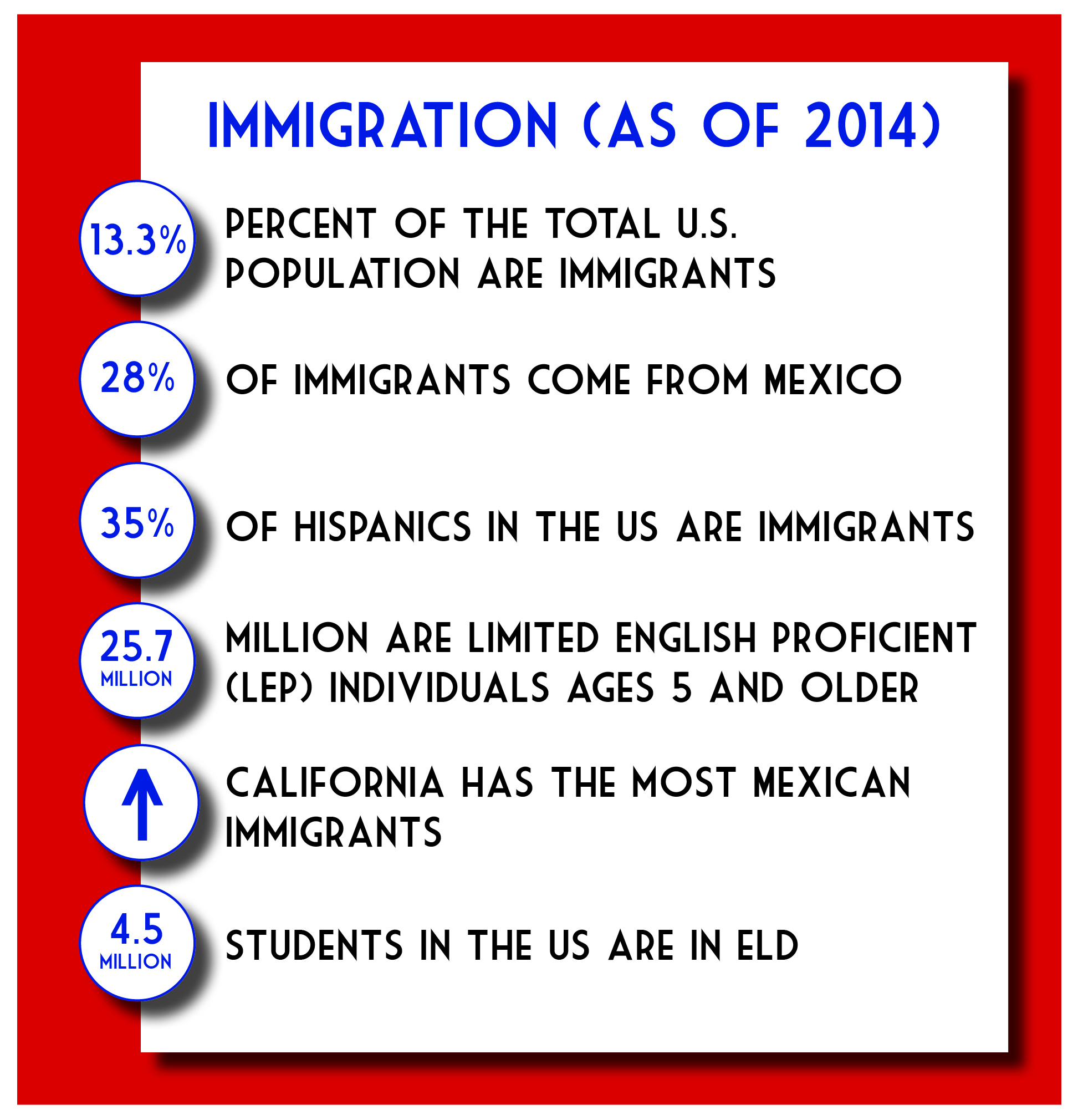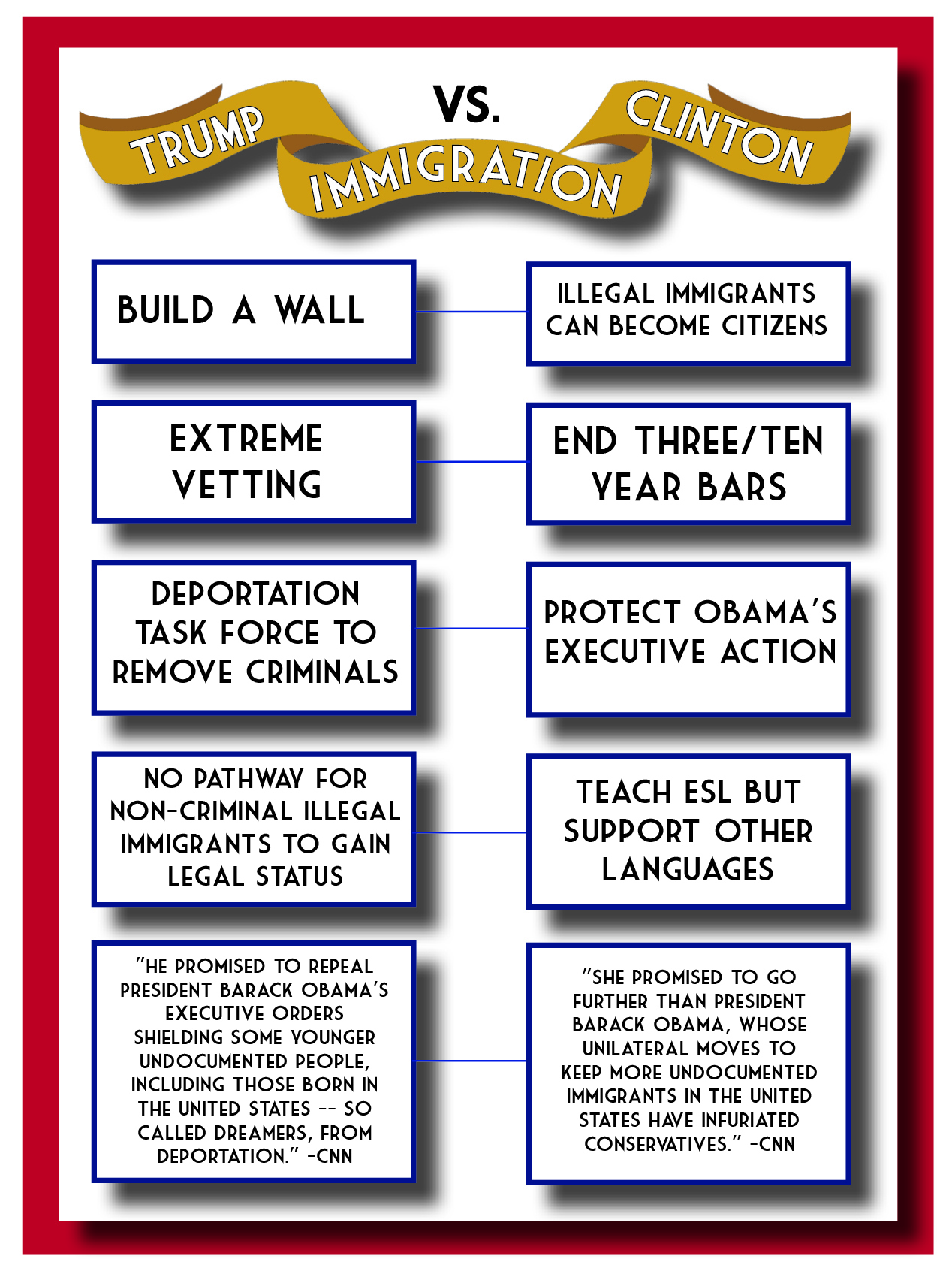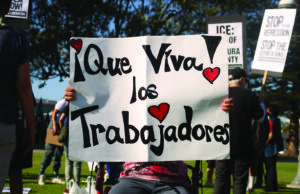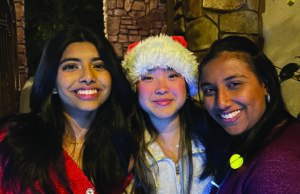Across borders: Student immigrants start a new life at NPHS
The land of opportunity: going the distance to become an American
At the crack of dawn, the rising sun shines orange through the dust in the atmosphere, kicked up from the parched ground. Shouts and chatter from the orphanage pierce the air as children mill about, getting ready for the day. A young girl shoulders her belongings, and looks back at the building behind her.
This was her home. This was her life. But she’s leaving now, for an adoptive family with a different language and a different lifestyle. The destination? The United States.
It’s been about six years since that move and Ruthie Cosarelli, sophomore, now has a full schedule here in the U.S. She heads to ESL 3 in the morning, where she is the only student that does not speak Spanish. Although Cosarelli now seems like a characteristic NPHS student, taking typical courses such as World History, she was accustomed to an entirely different situation, culture, and lifestyle altogether for the first decade of her life.
When Cosarelli was eleven years old, she and her biological brother moved to the United States from an orphanage in Ethiopia to live with an adoptive family. Neither of them spoke any English.
“When I needed something, I couldn’t say anything, or when I was scared, it’s hard because I could only speak one language to my brother, and it was scary coming here,” Cosarelli said. “I was like, ‘Oh my gosh. I have to learn English. And then I have to forget my language.’ Because it was too hard to keep them all together. English is tough to learn because there are so many words that are similar.”
Though Cosarelli has lived in the United States for several years, she still remembers life before her adoption, and how different life is on another continent, let alone another hemisphere. According to The United Nations Children’s Fund (UNICEF), Ethiopia has one of the largest orphan populations in the world. 13 percent of Ethiopia consists of children missing at least one parent, estimating to about 4.6 million children. 800,000 of those children lost their parents from AIDS.
“When I compare (Ethiopia to the United States), it’s not fair because where I used to live, I used to work a lot to get food and farming and stuff for water,” Cosarelli said. “The American people get a lot. So when I compare, it makes me upset. It’s unfair that some worlds are poor and some worlds are like here. When you know both ways, it’s weird and scary.”
Now, Cosarelli’s routine consists of different activities, such as being a member of NPHS’s cross country team, which she practices until 5 p.m. Monday-Friday. In the future, Cosarelli plans to attend college and become a nurse. She dreams of one day returning to Africa to help others.
“I want to be a nurse and then go back to Africa and then maybe help and stuff, because you know, I would love to visit Ethiopia,” Cosarelli said. “If it doesn’t work, I would like to travel around and help out people who are like me.”
Although Cosarelli was legally adopted, it is still difficult for her to pass between borders. This challenge does not stop her from travelling on mission trips to help orphans outside of the United States.
“I went (on) Mexico trips and it was really scary to come back because it took a few minutes to let me pass, but I’m working on (my citizenship) because it’s really frustrating,” Cosarelli said.
Cosarelli is not alone when it comes to having to face the challenge of learning a new language and living in a foreign country. Daniel Beraza, senior, came to the United States three and a half years ago, searching for better opportunities and education. Unlike Cosarelli, he knew small amounts of English before traveling to the United States.
“My experience the first time (traveling to the US) was very tough and difficult. The first time, I didn’t know anything about English. I only knew, ‘hi, hello, good morning,’” Beraza said.
Immigrant students, according to the Pew Research Center, make up 26 percent of the US student population, face difficulty adjusting to American high school life, especially when dealing with resettlement, classes, and American students who only speak English.
“Sometimes the people treat you different,” Beraza said. “It’s hard (to make friends) because I’m afraid of what other people will think.”
Cosarelli also encountered obstacles when it came to her peers in other classes.
“When I’m in class, sometimes I’m afraid to write on the board because some people see me a little bit different, or maybe it’s just because I’m adopted,” Cosarelli said. “I used to care before a lot more, but now I’m like, ‘You know what?’ …There’s nothing I can do about it.”
The challenges these immigrant students face begin long before they enrolled in school here. José Ireta, counselor, explains the situation not uncommon for refugee students who flee violence.
“Many (students) had to come here by themselves traveling for 30 days or more through three or four countries. It can be traumatic,” Ireta said. “Some come because it was dangerous in their home country. Some have been separated from family and are reunited with a parent who may have come here a decade ago. They don’t know how to adjust to their new family.”
Beraza, who left his uncles, cousins, and grandparents behind in Mexico, is currently a US resident who hopes to one day become a citizen.
“I think (the United States is) a great nation, and (has) better opportunities for the people, better studies,” Beraza said. “(You can’t) break the laws to be a citizen. Follow the rules.”
After graduation, Beraza plans to study aviation in college and then join the US navy.
“I always dreamed to be a fighter pilot,” Beraza said.
Alexandra*, junior, came to the United States from Guatemala just two years ago. Upon her arrival, she, like Beraza, knew small amount of English, such as colors and numbers.
“(Learning English is) a little difficult, but I like English, so I love speaking English when I can. Because of my family, I can only speak Spanish, but when I have the opportunity to speak English, I try,” Alexandra said. She moved to the United States to meet with her family, and to recieve a better education and career.
“(I don’t miss my home country) because in Guatemala it’s a lot of crimes, and in Guatemala I don’t have any opportunities for work or get a good future,” Alexandra* said.
According to the Office of Student Acce ss and Completion (OSAC), Guatemala has one of the “highest homicide rates in the Western Hemisphere,” and according to the Global Education Fund, 2 million Guatemalan children are not enrolled in school.
ss and Completion (OSAC), Guatemala has one of the “highest homicide rates in the Western Hemisphere,” and according to the Global Education Fund, 2 million Guatemalan children are not enrolled in school.
The 1982 Plyler v. Doe Supreme Court ruling gave undocumented children the right to a public education in the United States. The case dealt with a Texas law that prevented undocumented immigrants from attending school, and the Supreme Court found it “directed against children, and impose(d) its discriminatory burden on the basis of a legal characteristic over which children can have little control.”
Alexandra* now has her green card, and plans to take her citizenship exam and apply to San Francisco University to be a designer.
“I think the United States is the country for opportunities,” Alexandra said. “Here, I feel safe, and I like to live here with my family, and the school is free, so I don’t have to pay. In Guatemala, I have to pay.”
*name changed upon request
Learning a foreign language in a foreign country
Imagine that, at the age of 13, you have to leave behind everything you know: all your friends, your family, your habits, your lifestyle. You embark on a scary journey to a foreign land where you don’t know the people and you can’t talk to them because you don’t speak the language. You don’t know whether they will accept you. But one thing is for certain: your new home awaits.
Most students attend local community schools. Immigrant students, however, travel thousands of miles to learn from the American educational system. They come to US to escape war or to search for better opportunities. These students leave their old tribulation behind at home , only to enter a new realm of difficulties from a foreign country: learning English and adapting to new academics
John Abney, English Language Development (ELD) 1 teacher, describes the English known by immigrants as limited.
“They may be able to count to ten. They may be able to know days of the week, say hello and goodbye, but aside from that they come in with very little knowledge into my class,” Abney said.
Immigrant students are placed in one of the three levels of the ELD program based on how much English they know. Students come from unique backgrounds and education. This makes it difficult for teachers to teach one standardized lesson plan.
“All these students come in at their own levels and they may not have gone to a formalized school before they got here, which makes it harder for them to learn,” Abney said. “It could also be (that) they have lived in California their whole lives and they have just been in the ELD program for all of school, and they haven’t got out for whatever reason, but this just illustrates the different levels students could be at. It demonstrates how I have to tailor the lessons for each individual student.”
Even though many immigrant students have a minimal understanding of English, classes are taught in English, which can be problematic.
“It is very difficult to learn a new language, especially English. English doesn’t sneak up on you from around the corner; it kicks down the door, punches you in face, and kicks you in the back,” Brandon Janes, ELD 2 teacher, said.
The language barrier isn’t just a problem for students, but also for the teachers. The ELD teachers all know very little to no Spanish, which makes it hard to understand and converse with students.
“There have been issues before in the classroom between two or three students and I don’t know what is going on,” said Janes, “But based on body language, I know that something isn’t right, so I have to pull in Mr. Ireta or someone else who speaks Spanish.”
Even though the students and teachers within the ELD program struggle with communication, it is a positive learning experience for both parties. Students improve speaking and teachers learn more about their students’ experiences.
“I’ve heard some amazing stories from my ELD students based on what they’ve come from,” Janes said. “When they do share, it is very interesting; they do come from some varied backgrounds and challenging situations. Hearing that from them gives you a whole new respect for them.”
Their stories give the teachers recounts of the students’ first hand experience with an unknown world.
“Overall, I think that most fellow students don’t know the plight of refugee students. I think all parties, such as students, staff, etc., need to be aware of what families sacrificed to get here and that even you could be seated next to someone in class who worked the last 4 years 10 hours a day earning 50 cents an hours,” José Ireta, school counselor, said.
In order to be considered English Proficient, students must pass all three levels of ELD along with the California English Language Development Test (CELDT.) Students are then deemed English Learner (EL) students and are entered into college preparatory classes.
“They are held to the same standards as everyone else. It can be really difficult for EL students when they are reclassified because there is a big gap they have to fill in order to catch up. It is really important for teachers to recognize that when they have an EL student in their class.,” Abney said.
Along with taking an ELD class, students are placed in other classes taught in English in hopes of completing the student’s graduation requirements.
“I’m taking World History, and World History is (about) a lot of Americans, and it’s a little bit different because the teacher will only speak English. But, he understands I don’t speak English well, so he tries to do the class more easily and more good,” Alexandra* , junior, said.
Even though students take classes that count towards their diploma, many are still unable to graduate due to the language barrier and their late entrance into public school. According to the Center for Immigration studies, as of 2011, 28.5% of immigrants did not receive their high school diploma, which is four times that of natural born citizens.
“If they come here later, it is nearly impossible to take required classes because they do not have enough time to learn English well enough to take classes like Biology, Geoscience, etc. NPHS only offers ELD classes to learn English and social science classes at the SDAIE (Specially Designed Academic Instruction in English) level. All other classes are only in English. When a student is seventeen and half, we refer (he or she) to adult school where they can earn a GED,” Ireta said.
But with the removal of the California High School Exit Examination (CAHSEE), as of two years ago, it has become easier for immigrant students to receive their diploma.
“The CAHSEE was a huge hurdle before, so we are seeing a lot more students now getting their diploma as opposed to the certificate (of completion of high school), so it is actually better for the students,” Janes said.
The ELD program has also implemented iLit this year, a reading program that incorporates technology to improve the student’s understanding. Teachers and students are now able to access numerous resources at school and at home.
“The program has been really helpful so far. They are all at a slightly different level and with this new program, they can all get their individual book assigned electronically,” Paula Anderson, ELD 3 teacher, said.
Although they come from different countries, immigrant students are the same as any other student in many ways.
“They are like most other teenagers: they are funny and they joke around. It’s just like any other class,” Anderson said.
* name changed upon request



